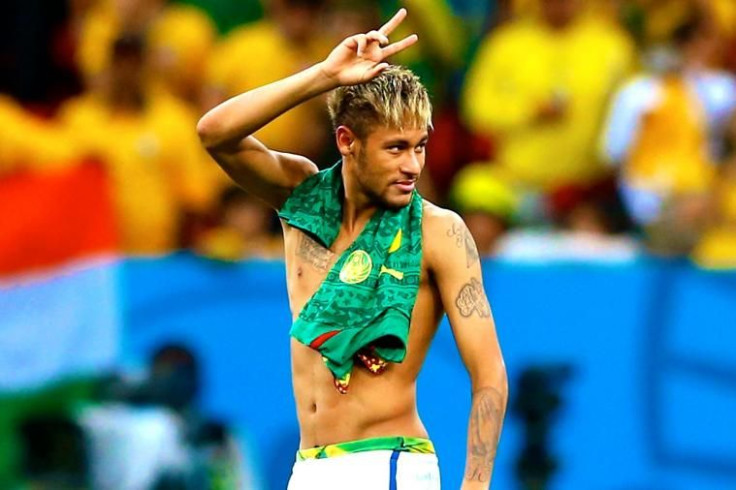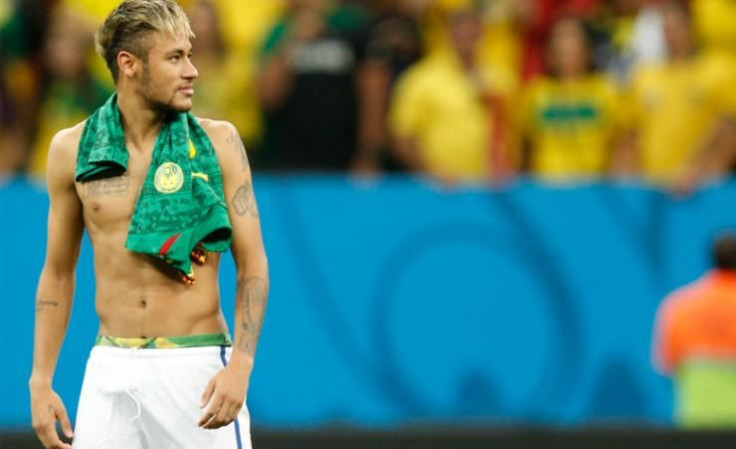Rio Olympics Advertising Problems: Snapchat And Ambush Marketing Has IOC Throwing Up Hands

At the end of a Saturday night World Cup match between Brazil and Cameroon in 2014, Brazil’s star forward Neymar did the unthinkable: he peeled off his "seleção" jersey and revealed the waistband Blue Man underwear tie-died in Brazil's blue, gold and green. That sliver of underwear was seen by millions of people around the globe, priceless exposure for the small underwear brand, which started posting about it on the company's social media accounts.
Hours later, the company had received a cease and desist letter from FIFA’s lawyers, demanding that it stop promoting a connection to the World Cup it hadn’t paid for, while Neymar found himself at the center of a FIFA investigation that could have cost him eligibility in the tournament.
This summer in the same city, the International Olympic Committee is going to have an even harder time tamping down unauthorized marketing that happens around the games, putting at risk the fastest-growing source of revenue for the Games: the billions that the IOC and host cities reap from "official" Olympics sponsors that pay tens of millions apiece for that privilege.
In the past four years alone, social media has evolved past the text-based communication of Facebook and Twitter into a video-heavy world that is very difficult to surveil. Services like Snapchat for example, are currently impossible for third parties to monitor to make sure their rights are not being infringed.

That makes it hard for sport organizations like the IOC to guarantee that the sponsorships they sell to brands can remain exclusive. And with more athletes striking their own long-term partnerships with brands to pay for year-round training, as well as planned and opportunistic "brand-jacking" by marketers, the airtight seals that the IOC promises its partners are now riddled with leaks.
“Finding and regulating this kind of abuse is extraordinarily difficult,” Max Teitelbaum, the co-founder and chief operating officer of What Ran Where, a competitive intelligence platform for brands, said of policing mobile ads. “The IOC faces a unique challenge.”
Ahead of the 2016 games in Rio de Janeiro, the IOC made a move that admitted, tacitly, it can no longer keep its promise. It announced a number of changes to Rule 40, the rule that had barred athletes from promoting or advertising anything during the Olympic Games, amending the rules instead to permit athletes to participate in advertising that was generic and did not explicitly tie the product or ad to the games themselves.
Some expect that this is the first of many moves toward reimagining the balance the IOC strikes between the needs of its partners and the needs of its athletes. But it could also destabilize, and maybe even devalue the Olympics’ fastest-growing source of revenue.
“I always felt as though Rule 40 was an unnecessary restriction,” said Peter Carlisle, managing director of Octagon’s Olympics and action sports group, a unit of the advertising and marketing services firm Interpublic Group. “You could argue it so many different ways, but I think preserving the current system is a bad idea.”
Over the years, the IOC and its host committees earned their reputations as aggressive defenders of their intellectual property rights. In 1995, the IOC sued Audi because it thought the German automaker's four-ring logo, which had been in place since 1936, was too similar to its five-ring logo; back in 2012, the United States Olympic Committee sent cease and desist letters to a group of knitters for hosting their own "Olympics."
The IOC takes its sponsors’ rights just as seriously. In London during the 2012 Olympics, everything from the O2 Arena to the logos on the toilet paper dispensers in the bathrooms at Olympic Games sites were either renamed or taped over, lest attendees get the idea that certain sponsors had paid for their right to be part of the games.
"The IOC and Disney are probably the two most brand-sensitive companies on the planet," said Greg Mancusi-Ungaro, the chief media officer of Brand Protect, which handled digital reputation management for Vancouver’s Olympic committee, VANOC, during the 2010 Olympics.
It's cultivated this image because sponsorships have become a vital component of the IOC's revenues. Broadcast rights remain the biggest piece of the Olympics pie, but sponsorship revenue has been growing faster than the money generated by broadcast rights. Five Olympic cycles ago, the IOC’s global sponsorship revenues totaled $279 million. By the most recent Olympics cycle, that number had leapt to $950 million.
Olympics’ host cities have been cashing in, too: During the last two Olympic quadrennials, a term for the four-year cycles that include one summer games and one winter games, the hosts have combined to generate at least $1.5 billion in sponsorship dollars, according to figures released by the IOC this spring.
As those figures have swelled, the abuses of those sponsorship agreements have ballooned too. During the 2014 World Cup, a majority of the hundreds of cease and desist letters sent on FIFA’s behalf were for digital infractions, according to Rafael Lacaz Amaral, a partner at Kasznar Leonardos, one of the firms that represented FIFA in Brazil.
Relaxing the grip of Rule 40 should have some effect. It will allow big names like Michael Phelps or Gabby Douglas to preserve their ties to sponsors, many of which have been with returning Olympians since 2012.
But the changes won’t be of much help to a majority of their teammates. All of this generic, non-Olympic advertising had to be approved months in advance, long before most Olympic hopefuls can even start thinking about striking up a relationship with a sponsor. By the time they get a chance to rustle one up, it’s too late to get in under the Rule 40 guidelines.
“It’s such a small percentage of athletes that have long-standing corporate partnerships,” Octagon’s Carlisle said. “[The swimmers] may not even have swimsuit deals [at this point].”
And ultimately, it’s the athletes who bear the brunt of this. The IOC may not be able to watch Snapchat, or cut a deal with Facebook or Weibo to pre-emptively block infringing posts, but it can threaten to strip athletes of their eligibility if they’re caught promoting products that haven’t paid for Olympic sponsorships. That’s especially dangerous for athletes when, in Carlisle’s estimation, an “extremely low” percentage of the companies looking to deal with athletes understand how Rule 40 works.
What these changes and future ones do to the value of Olympics sponsorships remains to be seen. Carlisle sees a further relaxing as a positive. “Whatever diminution in value among those existing sponsors, you'd have a corresponding increase in interest, investment and evaluation among all these other companies and brands that would enrich the Olympic movement,” he said.
Others are less sure. Letting more brands in will give others negotiating leverage with the IOC. “If rule 40 isn't policed properly, top sponsors will use it to argue for better pricing,” Frank Ryan, the head of sponsorship deals at the law firm DLA Piper, told Reuters.
Regardless of what happens, the stakes are incredibly high: More than half of the $2.7 billion operating budget for the 2016 Olympics comes from sponsorship revenue, more than $570 million of it local.
NOTE: Due to an editing error, an earlier version of this story stated that Octagon is part of WPP. It is part of Interpublic Group.
© Copyright IBTimes 2024. All rights reserved.











